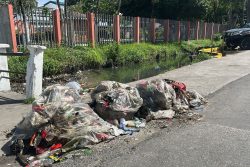Dear Editor,
In his trenchant critique on the direction and operations of GuySuCo, Mr. Samuel Gittens made a startling comment, “The coalition did not fool the workers. It closed down four estates and vowed to dismantle them.” During the 2015 election campaign, in response to PPP/C’s claim that the PNCR-led coalition will close the sugar industry if they win power, the coalition insisted, “sugar is too big to fail,” and if elected, they would offer sugar workers a 20% pay increase. The sugar workers fell for that ruse, and it was their votes at the 2015 polls, along with those of rice farmers (estimated at 11%) that helped to secure the PNCR coalition’s victory. Mr. Gittens continued to raise several other issues. “Is government really interested in rehabilitating GuySuCo?” “Or is the plan to allow it to collapse and then re-distribute the land to friends, families, and cronies?” “Is the CEO retained to guarantee the failure of the company?” Apart from these questions, he stated, “capital money invested in GuySuCo has been squandered; and that money given to some displaced workers is simply to appease them and reduce their wrath as government allows GuySuCo to collapse.” To express deep concerns about the financial viability and future of GuySuCo, including management, is understandable. What is not comprehensible is to assert, at this time, that sugar’s survival is based solely on profits.
While the sugar industry has been going through some difficult years mainly because of the lack of diversification, modernization of plant and operations, plus the dramatic reduction of European Union (EU) pricing by 34%, these negative forces should not allow critics to write-off the industry. There is still a viable market for refined white sugar in CARICOM (estimated 200,000 metric tonnes annually) where Guyana could get as much as $(US) 600 per tonne of sugar. On the question of management, Vice President, Bharrat Jagdeo assures that it would be strengthened. Food security necessitates that most countries subsidize their agriculture sector of which sugar is a major crop. The Caribbean Development Bank stated (2014): “…it is economically viable for GOGY [Government of Guyana] to continue subsidizing and protecting the cultivation and harvesting of sugar cane and processing of sugar for export and local consumption.” The average annual subsidy to GuySuCo over the period 2011 to 2020 was equivalent to 3.1% of the national annual budget. To subsidize a key sector is considered good public policy (saving 7,000 jobs and livelihood of 35,000 persons) a measure that prevented (prior to 2017) massive social and economic dislocation in the sugar belt and beyond.
After the sugar estates’ closure in 2017, the anticipated social and economic woes overwhelmed the dismissed sugar workers whose lives were plunged into disarray (ILO: 1/21 Report). It is noted that the average annual per capita subsidy for bauxite workers is 4 times more than the average per capita subsidy for sugar workers. Certain industries like sugar and bauxite are deeply interwoven in the communities in which they operate. The sugar industry brought workers’ fore-parents as either slaves or bonded labour into the country, and that link (social, cultural, psychological, and financial) to sugar has endured for countless decades and would not be easily broken. Another redeeming feature of sugar is captured by GAWU; “the industry provided other support, some of which continues, such as drainage and irrigation and health services…. our habitation of the low-lying coastal belt is made possible by the network of canals, dykes, sea defenses and water conservancies which were built primarily for the sugar industry.”
The PPPC government is committed to diversification and structural transformation of the sugar industry. However, these were not priorities of the PNCR coalition government under whose rule the sugar cane fields, the factories, and infrastructure were allowed to deteriorate. The Minister of Agriculture says that they expect the Rose Hall sugar estate to begin production in early 2022. The lead time is necessary since the factories became non-operational from 2017. To weaken further the industry, the PNCR-led coalition was planning to get rid of huge chunks of sugar estate lands. The rationale offered was that they would sell the lands to raise $(G) 35.9 billion to help pay off GuySuCo’s debts. And the prospect of advancing mechanical means of harvesting cane to lower costs was derailed by the coalition which rejected a CDB-funded Sugar Industry Mechanization Project Loan.
The eagerness to dismantle the sugar industry is most evident at Wales where the destruction was so surreal that the PPP/C government decided that it could not be rehabilitated. Instead, it created the Wales Development Authority to serve as an industrial hub, to restore back that community and beyond to productive economic life. The non-production of sugar at Skeldon at present is not necessarily a deterrence to privatization or to joint-public-private partnership. In addition, there is still immense value in its co-generation capability (energy). The Skeldon Energy Incorporated (SEI) reported that in 2016 it had done “$(US) 45M (G$9.45B) in energy sales to the Guyana Power and Light Inc., (GPL).” One should not forget that sugar had been able to rescue all sectors of the economy when they were struggling. Former Minister of Agriculture Dr. Leslie Ramsammy says that over $(G) 92 billion (derived from the sugar levy) had been allocated to other sectors over the period 1976-2000. Sugar workers also contribute $(G) 1.2 billion annually to NIS. However, these positives do not mean that concerted attempts must not be made to progressively reduce subsidies and enhance productivity. The government projects that within the next 4 years, the sugar industry would bounce back to economic viability. Thus, the challenge ahead for GuySuCo is formidable.
Sincerely,
Dr. Tara Singh









